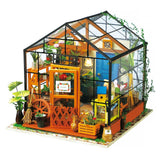Drones are popular for its aerial photography skills but not many us have a chance to look into the bigger picture. Without a doubt, in the US, many people consider drones are bad for their military origin and it is very common to see friendly camera drones once mistaken can raise alarm in a matter of seconds.
But every technology at its budding years can have an equal share of concerns before it hits the spotlight. Likewise, apart from your knowledge on drones that are used for photography, we have some instances that prove that drones are not as bad you may think.
Today, we will discuss how drones are changing agriculture along with its working and benefits.
How do Agricultural Drones work?
Aerial imaging of the agricultural fields has been around for a while which includes the traditional technologies like satellite imaging, manned aircrafts surveys and man scouting. But UAVs are sure does change the agriculture and farming we know into much faster and efficient.
Drones in agriculture are considered as a "smart farming" technique which has greatly improved the efficiency of the crop management. The commercial drones that are specialized for farming use thermal imaging technology which precisely indicates which crop sector needs water or fertilizers.

Also, there are multiple imaging sensors that can identify the level of nitrogen and map the diseased crops by measuring the difference in the near IR light reflection. By doing that drones are saving acres of croplands with critical insights on crop health.
What is the role of drones in farming?
Commercial drones need certification in order to be legally used but a survey suggests that many farmers can operate their own drones easily. Here are some list of things that drones are popularly used in farming and agriculture
Crop Monitoring - for water and fertilizer requirements
Mapping and Survey - to access and differentiate healthy crops from diseased
Crop Spraying - specially equipped drones can precisely spray on targeted areas.
Planting - some shoot seeds into the soil along with all the nutrients it needs
Irrigation Management- to easily monitor the areas with pooling or insufficient water supply
Soil Analysis - check and analysis Nitrogen deficient regions through multi-sensory imaging
Livestock Monitoring - to keep a close watch on the cattle movement, identify injured or missing cattle.
Benefits of Drones in agriculture

- 40 to 50 times faster spraying than manual labor
- 98% of the time saved by adopting drone technology for survey and mapping
- Timely actions can be taken if any poor crop management is identified.
- Cheaper and more efficient than satellite imaging or manned aircraft.
- Not affected by weather changes or availability.
- Precise data and reports for future preparation of the soil and the field for farming and irrigation.
You can get your drone operator certificate to explore the opportunities in the agriculture and much more. Some experts claim the drones just scratched the surface while others are looking forward to more innovations. Drone market has major potential in cargo, real estate and agriculture and as drone enthusiasts, we will keep you updated on the latest trends and news on the drone. Subscribe to Justperidrive for more.



















